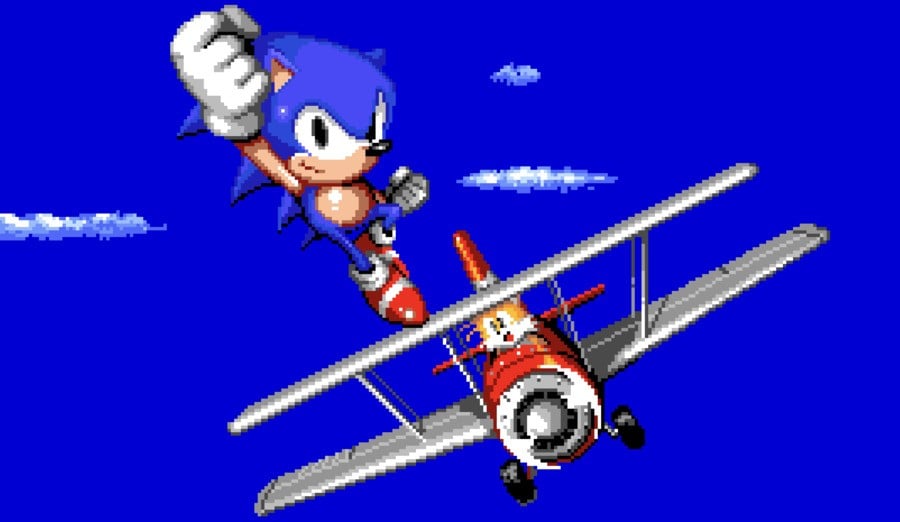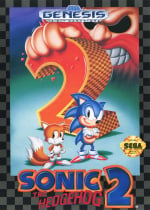
30 years ago today, Sega unleashed Sonic the Hedgehog 2 on the world.
The sequel to the game which helped Sega break Nintendo's stranglehold on the North American market, Sonic 2 was intended to be bigger and better in every conceivable way, and the company earmarked a then-huge $10 million to advertise it.
All of this intense marketing activity resulted in 'Sonic 2sday', a global roll-out which saw the game hit stores shelves in the west on the exact same day, November 24th, 1992 (it wasn't quite a global rollout, as Sega's official release records state that Sonic 2 was on sale in Japan on November 21st). The blue blur's second console adventure effortlessly became the biggest video game launch of the year.
You can see footage of this international event in the videos below.
Al Nilsen, the former Head of Global Marketing at Sega of America, explains to us how it all went down:
What we would do is not only work with what we were doing in the US, but also work with what we were doing in Japan and Europe and the rest of the world. And that coordination really started in a major way with the plans for Sonic 2 and Sonic Tuesday, where we did a worldwide global launch. This was an idea that I had.
Madeline [Canepa, now Madeline Schroeder, former Sega of America product manager and marketer] and I went and pulled everything together, and then worked with how could we go and do everything from a PR angle. How could we do everything from a retailer angle to make sure when you walked into a Toys R’ Us, it was literally 'Sonic boutiques'. Where it was not just Sonic, but all of our licensed products that were just starting to come out. What could we go and do in terms of previews.
We had the Sonic 2 tour which went to – I forget how many – retailers and air force bases in the US. And in Europe, it was on London double-decker buses promoting Sonic.
We also spoke to Ellen-Beth Van Buskirk Knapp, Marketing Services Manager at Sega of America, who added:
Hands down the craziest thing we ever did was the street date on Sonic 2. That was crazy. That was 'You've got to be kidding me!' There were so many details. There were so many obstacles to get over. That particular decision, which was a great decision - Sonic Tuesday? Boom! That one was really bodacious. It was the hardest and closest to failure.
We had to manage retail expectations. We’re going to deliver the inventory to every single retailer on the same day. Well, Toys R’ Us are used to getting their inventory first and the most amount of inventory of anybody, because they were the biggest guys on the marketplace at the time. They said, ‘If we don’t get our preferred status, we’re not going to carry it.’ There’s also how many units do you ship in and also we’re going to have to take reservations. We had a huge hurdle on the retail side and we had to do that around the world in different time zones and different languages.
The campaign worked. 2.2 million copies of the game had already been pre-ordered by the start of October, and upon release, it shifted an incredible 600,000 copies in a day in the US, in additional to 400,000 preorders. In the UK, it accounted for 48% of all software sold in that week; by the time the dust had settled, Sonic 2 had sold through its initial 3.2 million launch batch in just a fortnight, generating an incredible $450 million in revenue. It is believed that it sold 6 million copies in total; small fry when compared to modern video game sales, you could argue, but huge for the early '90s.
Despite the amazing critical and commercial reaction to the game, its creation was anything but plain sailing. Yuji Naka had parted company with Sega following the release of the original game and was only convinced to return to the fold by Mark Cerny (who would later work at Sony on its PlayStation systems), who had established Sega Technical Institute in North America. STI is where Sonic 2 would find its home.
The mix of American and Japanese staff on the game meant that there was something of a culture clash; Japanese developers were accustomed to working in 'crunch' conditions, and the language barrier also presented challenges. There were also frictions between the two camps; level artist Craig Stitt told Retro Gamer magazine that he thought Yasushi Yamaguchi (AKA Judy Totoya) was "a machine" but was less taken with Naka, whom he thought was "an arrogant pain in the ass".
Despite the game being hailed as a triumph, Naka said he wouldn't develop another Sonic game if he had Americans on the team, so Sonic 3 was created almost entirely by Japanese developers.
Do you have fond memories of Sonic 2sday? Let us know with a comment below.

